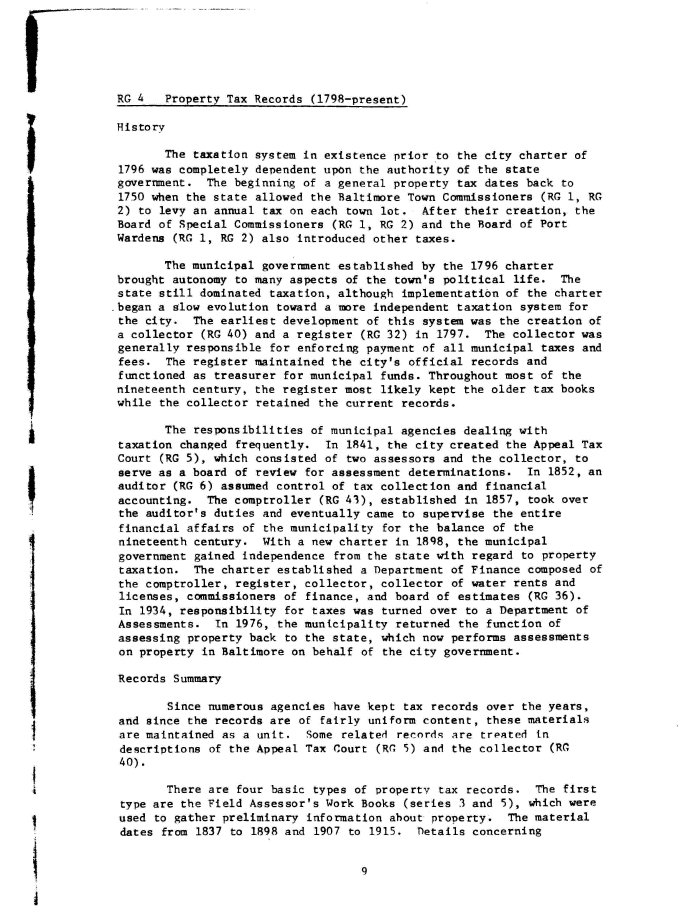|
RG 4 Property Tax Records (1798-present)
History
The taxation system in existence prior to the city charter of
1796 was completely dependent upon the authority of the state
government. The beginning of a general property tax dates back to
1750 when the state allowed the Baltimore Town Commissioners (RG 1, RG
2) to levy an annual tax on each town lot. After their creation, the
Board of Special Commissioners (RG 1, RG 2) and the Board of Port
Wardens (RG 1, RG 2) also introduced other taxes.
The municipal government established by the 1796 charter
brought autonomy to many aspects of the town's political life. The
state still dominated taxation, although implementation of the charter
began a slow evolution toward a more independent taxation system for
the city. The earliest development of this system was the creation of
a collector (RG 40) and a register (RG 32) in 1797. The collector was
generally responsible for enforcing payment of all municipal taxes and
fees. The register maintained the city's official records and
functioned as treasurer for municipal funds. Throughout most of the
nineteenth century, the register most likely kept the older tax books
while the collector retained the current records.
The responsibilities of municipal agencies dealing with
taxation changed frequently. In 1841, the city created the Appeal Tax
Court (RG 5), which consisted of two assessors and the collector, to
serve as a board of review for assessment determinations. In 1852, an
auditor (RG 6) assumed control of tax collection and financial
accounting. The comptroller (RG 43), established in 1857, took over
the auditor's duties and eventually came to supervise the entire
financial affairs of the municipality for the balance of the
nineteenth century. With a new charter in 1898, the municipal
government gained independence from the state with regard to property
taxation. The charter established a Department of Finance composed of
the comptroller, register, collector, collector of water rents and
licenses, commissioners of finance, and board of estimates (RG 36).
In 1934, responsibility for taxes was turned over to a Department of
Assessments. In 1976, the municipality returned the function of
assessing property back to the state, which now performs assessments
on property in Baltimore on behalf of the city government.
Records Summary
Since numerous agencies have kept tax records over the years,
and since the records are of fairly uniform content, these materials
are maintained as a unit. Some related records are treated In
descriptions of the Appeal Tax Court (RG 5) and the collector (RG
40).
There are four basic types of property tax records. The first
type are the Field Assessor's Work Books (series 3 and 5), which were
used to gather preliminary information about property. The material
dates from 1837 to 1898 and 1907 to 1915. Details concerning
|

